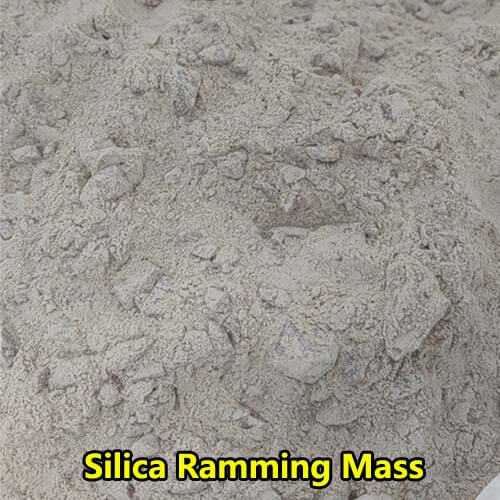The 400,000-ton steel rolling mill renovation project utilizes a high-efficiency regenerative, all-blast furnace gas-fired heating furnace. This furnace integrates a high-efficiency regenerative combustion system and a reversing system, enabling dual preheating of air and gas to 1000°C. The furnace has an effective length of 30 meters, an inner width of 4.3 meters, and a normal heating capacity of 70 tons/hour.
The furnace is a two-stage design with two arched sections: heating and soaking. The soaking section, located near the tapping side, features a solid bottom soaking bed. Heat is supplied from both the rear of the soaking section and the heating section. Except for the furnace floor, some side walls, and regenerative elements, which are brick-built, the side wall working layer and furnace roof are cast in-situ, utilizing nearly 1,000 tons of refractory material. The key heating furnace components, the side walls and furnace roof, utilize a low-cement castable specifically developed for regenerative heating furnaces.
Compared with conventional heating furnaces, high-efficiency regenerative heating furnaces have the following characteristics:
(1) The burners used in traditional heating furnaces were eliminated and replaced with nozzle holes made of refractory castables;
(2) The brick chimneys of traditional heating furnaces, which were as high as 40-50 meters, were eliminated and replaced with steel chimneys with a height of only 18 meters;
(3) The large air preheater and gas preheater of conventional heating furnaces were eliminated and replaced with two sets of reversing systems and simpler pipelines, with air and gas dual preheating, and the preheating temperature reaches above 1000℃;
(4) The biggest feature of the regenerative heating furnace is that the furnace wall is hollow, heated on both sides and equipped with flame nozzles, and the operating conditions are harsh.
The working principle of the regenerative heating furnace determines that the side wall has the following characteristics:
(1) It is relatively difficult to install anchor bricks in hollow walls.
(2) The working surface of the hollow wall is heated on both sides, and the inner wall is easily damaged by the dual effects of temperature changes and air flow.
(3) The flame nozzle of the burner is integrated with the working layer, which affects the service life of the furnace wall.
(4) Since the air and gas are preheated to 1000℃, the hollow furnace wall must not have large cracks and air and gas cannot cross-contamination.
The complex structure of the regenerative heating furnace places very strict requirements on the selection of refractory materials:
(1) The high-temperature strength of the refractory material must be high, and it must be able to resist the erosion and corrosion of high-temperature airflow and flames during use;
(2) The refractory material used must have good thermal shock resistance and be able to withstand frequent temperature fluctuations without cracking or peeling;
(3) It must have good volume stability, small linear change rate, high compressive strength, and it is not easy for the holes in the furnace body to collapse. It will not crack after long-term high-temperature exposure, and it will avoid cracks between air and gas channels that may cause explosion accidents;
(4) It must have micro-expansion. The selected refractory material must have micro-expansion during use to prevent cracks;
(5) It must have good sintering performance. During use at 1000~1350℃, it must ensure that the wall working layer can be sintered to form a whole to adapt to the working conditions of double-sided heating.
(6) It must have good construction performance. During the construction of the furnace body, a large number of special-shaped modules need to be installed. The local gaps are extremely small, and some places cannot be built as a whole. Therefore, the refractory material must have good construction performance.
According to the use conditions of the regenerative heating furnace, the characteristics of the low-cement castable used are as follows:
(1) Good thermal shock resistance
The Al2O3 content of the castable is 55%~67%, and the compressive strength after drying and sintering at 1400℃ is 15~30MPa and 40~65MPa respectively. Compared with low-cement castables with high aluminum content and high strength, its thermal shock stability is better.
2) Micro-expansion
Adding an appropriate amount of expansion agent and aluminum-containing and silicon-containing materials to the castable allows for micro-expansion during use to prevent cracks.
(3) Good sintering performance
By adding an appropriate amount of sintering agent and other materials to the castable, the wall working layer can be sintered and formed into a whole during use at 1000~1350℃ to adapt to its double-sided tropical working conditions.
Preparation work before construction
According to the technical requirements of the drawings, the furnace’s steel structure, baselines, holes, and other areas should be thoroughly inspected and accepted. The side wall insulation brickwork and anchor bricks should be inspected. The shape and dimensions of the anchor bricks and hanging bricks should be checked and accepted piece by piece. No transverse cracks should be present. The bricks should be positioned in accordance with the design and maintained perpendicular to the furnace shell anchor hooks or furnace roof hanging beams. To prevent water absorption, the lightweight insulation bricks on the side walls should be brushed with a layer of asphalt. The inner mold should be securely supported and prevented from moving. The surface should be covered with cloth. The formwork should also be securely supported and oiled to facilitate demolding. Check the proper functioning of the mixer, vibrator, and other equipment. Check the crane for proper operation. If any malfunction occurs, repair it promptly or prepare other hanging equipment to ensure that the pouring of the castable is not interrupted. Clear the pouring area of debris and ensure it is neat and clean.
Construction points
(1) First, pour the bagged castable material into the mixer. Determine the number of bags to be loaded according to the capacity of the mixer. Dry mix for 12 minutes, then add water according to the construction requirements. The amount of water added must be strictly controlled. Stir for 2 to 3 minutes. Start discharging after the material color is uniform.
(2) Start pouring. The mixture should be vibrated while pouring. Construction should be continuous. After the vibrating rod is inserted into the material layer, it should be moved continuously and vibrated repeatedly until the surface returns to slurry, the exhaust is less, and the material surface does not settle. At the same time, the vibrating rod must not knock off the insulation layer, formwork, membrane and anchor bricks. When constructing the furnace wall, the pouring height at one time is 300 to 350 mm.
(3) Pay attention to the setting of expansion joints and the setting of pressure and temperature measuring holes. According to the requirements, expansion joints should be left on the side walls and the furnace roof. The side walls should be made of 60mm PVC plastic sheets. The contact areas between the furnace roof and the two side walls should be made of 50mm aluminum silicate refractory fiber felt. Eleven expansion joints should be left on the furnace roof in the horizontal direction and filled with 6mm corrugated plastic sheets.
(4) The construction process should generally be continuous pouring. When interrupted, the expansion joints should be firmly made with formwork. The same should be done when pouring the furnace roof. When construction is resumed, the joints must be properly handled.
(5) The amount of water added should be strictly controlled during the construction process. Under the premise of ensuring good fluidity, the amount of water should be minimized. Otherwise, it will affect the solidification strength. Once it leaves the mixer, it should be used up within 0.5h. If it is scattered during the interruption of construction, it must be discarded and must not be used.
Curing and demolding
After the castable is poured and fully formed, it should be left to rest in a natural environment for 24 hours. Avoid direct sunlight when the temperature exceeds 30°C. Avoid forceful knocking during demolding to avoid damaging the furnace wall. After demolding, any surface damage should be promptly repaired. If the crater is sealed by mud, it should be cracked and repaired.
Oven
(1) Before baking the furnace, the furnace should be cleaned of debris, the furnace bottom should be covered with magnesia sand, all wooden wedges on the hanging bricks on the furnace roof should be removed, and the bolts should be tightened.
(2) Before baking the furnace, all related equipment such as fans, motors, reversing valves, water pumps, etc. should be operated flexibly, and gas, water, electricity, compressed air, and softened water should be connected to the furnace. At the same time, all production preparations should be made.
(3) When baking the furnace, first use coke oven gas to bake the furnace, and then switch to blast furnace gas after reaching 800℃. When baking the furnace, pay attention to the thermocouple temperature. It should represent the domestic leading level, and steel production is also increasing year by year. The future goal is to continue to take technical improvement measures. It is planned that by 2002, this 70t ultra-high power electric arc furnace will produce 800,000 tons of steel annually, and all indicators will be close to the world’s advanced level.
LF
The three motors are automatically regulated by a PLC. The loading system is automatically calculated and controlled by a secondary computer. The alloy and furnace charge are then accurately metered into the molten steel via a high-level electronic weighing hopper.
The LF station features a wire feeder. A CaSi wire is fed before the ladle is hoisted for desulfurization, enhancing the purity of the molten steel. Bottom-blowing argon agitation begins once the molten steel enters the ladle, with flow and pressure displayed on a local control panel.
The refining time for each ladle is over 30 minutes, ensuring a thin, white slag before the ladle is hoisted and that all elemental content meets internal control requirements. The desulfurization rate can exceed 80%.
Continuous casting machine
Hot delivery and hot charging of continuous casting slabs is gaining increasing attention among steelmakers both domestically and internationally as a key approach to energy conservation and consumption reduction. Huaigang uses a conveyor roller conveyor to deliver hot slabs produced from continuous casting directly to the loading roller conveyor of the heating furnace in the rolling mill.
Raising the hot charging temperature of the slabs effectively reduces the energy consumption of the heating furnace. The final charging temperature of the continuous casting slabs depends on factors such as the post-shearing temperature of the slabs, the insulation effectiveness of the hot delivery roller conveyor, the duration of the hot delivery, and the matching of the continuous casting and rolling mills. The post-shearing temperature of Huaigang’s continuous casting slabs is generally between 900 and 1000°C. A holding furnace is installed between the continuous casting and heating furnaces to facilitate the connection and matching of the continuous casting and rolling mills.
Automation Control
The electric control system adopts a two-level automatic control system. It can be used for unified life process control and management from steelmaking workshop to rolling mill to ensure the stability and repeatability of production. The first level is the equipment control level, which belongs to the basic automation part. It uses programmable controllers to control the production equipment in sequence and in real time. The second level is the process control level, which uses microcomputers to optimize the production process and improve the level of scientific management.
(1) The advantage of the electric furnace steel short process production line is to achieve efficient, high-quality, energy-saving production, thereby reducing costs and increasing benefits. To this end, it is necessary to adopt advanced technology and equipment, match various equipment and processes appropriately, arrange each workshop reasonably, and organize production with correct operations.
(2) The independently developed technologies such as hot charging of molten iron, secondary combustion, and low-purity oxygen steelmaking have significant economic benefits and important promotion value and can be used as a reference.

